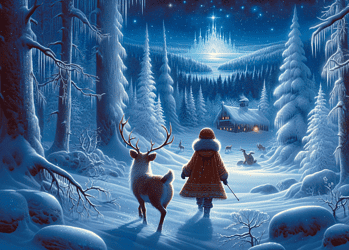According to an English-Portuguese duo, the origin of some of the most beloved stories may go back much further than we thought. With the aid of a mathematical model, Durham University anthropologist Dr Jamie Tehrani and folklorist Sara Graca Da Silva, from the New University of Lisbon found that Jack And The Beanstalk and Beauty and the Beast date well before the Roman Empire.

The Grimm Brothers became the most famous storytellers in the 19th century, but they didn’t create the stories themselves, they simply put them all together in a specific form. Dr Tehrani said:
“It’s remarkable that these stories have survived so long without being written down. They are older than the English language and would have been first told in one that is now extinct. “They were probably told in an extinct Indo-European language.”
For the longest time, stories weren’t passed down through writing, but through successive narrators. A father would tell a story to his son who would then pass it on to his friends and children and so on. As a result, stories haven’t remained fixed but have changed along the years like a big old game of “Broken Telephone”. So it’s very difficult to know when a story emerged because there’s no written mention of it. But Tehrani and Da Silva believe they have an answer.

They started with the hypothesis that Folktales might evolve like species, so they “borrowed” a mathematical model used in biology. They started with Red Riding Hood in 2013, finding similarities to East Asian tales in which a group of sisters are home alone when they hear a knock at the door. It’s either a wolf, a tiger or some other predator who eats all of them but one. But these stories are also similar to another well-known international type tale: “The Wolf and the Kids”, in which a bunch of goat-kids get eaten by a wolf. They analyzed the similarities and differences between this kind of stories and were able to establish a type of philogenetic tree of folklore – like the ones done for species. Now, they went one step forward and calculated when the folklore “species” first emerged.
They found that “The Smith and the Devil”, a story about a blacksmith who strikes a deal with the devil for superhuman powers likely originated in the Bronze Age, over 6000 years ago. “Jack and the Beanstalk”, heavily related to “the boy who stole ogre’s treasure” type of stories, originated 5000 ago. Some of today’s favorites, “Beauty and the Beast” and “Rumplestiltskin” have been traced down 4000 years.
“Some of these stories go back much further than the earliest literary record and indeed further back than Classical mythology – some versions of these stories appear in Latin and Greek texts – but our findings suggest they are much older than that.”
Furthermore, if their model is correct, then it confirms one of the most controversial statements in folklore. Wilhelm Grimm argued that the traditional German tales he and his brother Jacob compiled and first published in 1812 had roots in many other stories, from Scandinavia to Asia. However, many other writers and folklorists argued that this can’t be true. Tehrani and Da Silva contradict them.
“We can come firmly down on the side of Wilhelm Grimm.”



